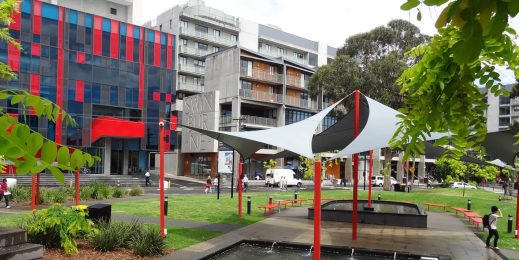
Creating new career pathways for 1.1 million Australians could help build the nation’s tech workforce of the future
New report calls for organisations in Australia to hire 20 per cent of early-career tech workers through alternative pathways by 2030
Increasing support for alternative employment pathways into Australia’s technology sector could help unlock a more diverse talent pipeline and address future skills shortages, according to a new report.
The report, Break down the barriers, was prepared by Accenture and commissioned by Microsoft. It finds that organisations in Australia are ‘filtering out’ potentially high-performing job candidates, with 90 per cent of advertisements for STEM roles requiring a bachelor’s degree or a higher qualification.
This approach is overlooking historically under-represented groups such as women, people with disability, and First Nations people. For instance, only one in three university students in STEM degrees are women. And STEM degrees only attract a participation rate of one in 20 for students with a disability, and one in 100 for those who identify as a First Nations person.
The report suggests organisations that hire from or invest in alternative pathways into the nation’s tech sector for these groups could unlock a more diverse and representative workforce. Made up of more than 1.1 million people, they could help bridge Australia’s future tech skills shortages.
Under business-as-usual conditions, the Tech Council of Australia predicts the sector will require an additional 186,000 people to meet the Australian Government’s target of filling 1.2 million tech-related jobs by 2030. Alongside skills and pathway programs, which will address the tech sector’s future needs, initiatives like skilled migration and upskilling talent through on-the-job training will help meet immediate needs.
“We have a real opportunity to make a difference. Gone are the days when candidates need a degree to be considered for a role,” said Tenielle Colussi, Managing Director of Talent and Organisation at Accenture Australia and one of the authors of the report.
By removing barriers and ensuring job opportunities are open to those who have alternate pathway experience, or offering programs that include alternative pathways, we’re not only solving for a talent gap, but creating exciting and fulfilling opportunities for amazing individuals who would have remained hidden in the workforce.
The report notes that the benefits of alternative pathways – including speed to competency, tailored support, practical learning, flexible experience, industry connections, and lower costs to learn – are especially relevant for under-represented groups.
Setting a new target for Australia
The report calls for Australia to change its approach to attracting and retaining tech workers by focusing on skills rather than degrees. It has set a target for organisations to hire 20 per cent of early-career tech workers through alternative pathways by 2030. These are pathways other than a bachelor’s degree, such as coursed-based learning (vocational education and training courses, micro-credentials and vendor courses), intensive pre-work courses (bootcamps) and work-integrated learning (apprenticeships, cadetships and traineeships).
In so doing, they could unlock an additional 31,000 workers from diverse backgrounds, including women, people living with a disability and First Nations people.
The report says reaching this target would have a significant positive impact on business performance. For instance, an Australian employer with 100 employees and $30 million in annual sales could generate $800,000 in savings every year from improved retention rates, increase worker productivity by 14 per cent, and grow annual revenue by $2.3 million by creating a diverse and inclusive workplace.
Hiring 20 per cent of early-career tech workers through alternative pathways by 2030 would also contribute significantly to Australia’s economic outlook. The benefits would include:
- $550 million in additional remuneration for new tech workers
- 2,000 previously unemployed workers moving into tech roles
- $250 million in additional tax revenue for government as Australians shift to more productive segments of the economy
- five times more applicants for each advertised tech role, greatly expanding the talent pool
- $35 million in savings on social services returned to government through a reduction in the unemployment rate.
Steven Worrall, Managing Director at Microsoft Australia and New Zealand, said:
This report highlights the incredible opportunity that remains untapped in our diverse workforce, and how Australia and our economy can benefit from making the tech industry more accessible and inclusive. This isn’t just about corporate responsibility – it’s a strategy proven to yield significant economic and social returns.
Taking action across the talent lifecycle
The report acknowledges that achieving the 20 per cent target will require collective action from organisations, Australia’s tech industry, government, education providers and not‑for‑profit organisations.
It also recognises that organisations are at different stages in their use of alternative pathways and need to provide action across the whole talent lifecycle. The report details practical steps that organisations can take during the planning, hiring, training and retaining phases to accelerate progress.
Furthermore, the report highlights the importance of nurturing early-career talent from diverse backgrounds. Experienced talent plays a big role in developing and supporting early-career talent, according to recent research by the Tech Council of Australia, in partnership with Microsoft and LinkedIn. A report from this research, Harnessing the hidden value: How US tech workers boost the growth of Australia’s tech ecosystem, says experienced workers within US tech companies help fast-track the career development of 25,000 early-career workers each year through mentoring and training.
Finally, Break down the barriers outlines three industry-level actions that will help increase the diversity of Australia’s tech talent pipeline:
- launching an awareness campaign that showcases the careers of successful candidates from under-represented backgrounds, who have come through alternative pathways
- creating a digital apprenticeship to make tech roles more accessible and attractive to under-represented groups
- defining skills standards and pathways to reduce confusion around the required skills and simplify access to information.
To learn more, read the report here.

















